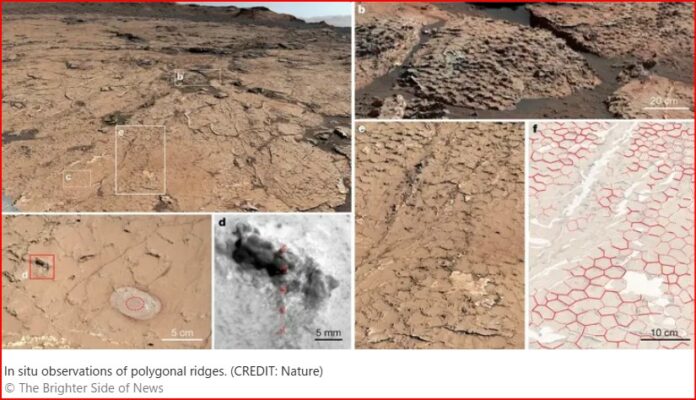NASA’s Mars Perseverance Rover, launched in 2020, embarked on a mission to explore signs of ancient microbial life on the red planet.
The unmanned mission aimed to advance our understanding of Mars’s past habitability, and the results have been remarkable.
One of its groundbreaking discoveries is the identification of mud formations that suggest wet and dry cycles, potentially spanning millions of years.
Core Samples and Hexagonal Patterns
The Perseverance Rover has collected core samples of Martian rock and regolith (a layer of broken rock and soil) for future return to Earth.
A study titled Sustained Wet-Dry Cycling on Early Mars published in Nature highlights the discovery of unique hexagonal patterns in these core samples.
These distinctive shapes form in regions that have experienced prolonged wetness, followed by extended periods of dryness.
This discovery is crucial because it suggests Mars may have undergone numerous wet-dry cycles, offering new insights into its potential for harboring life.
A New Understanding of Mars’ Past
Scientists have long known that Mars once had rivers, lakes, and seas. This adds a new dimension to the planet’s history.



